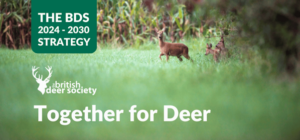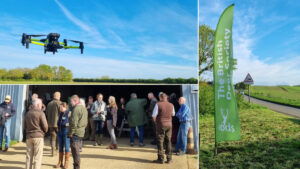ABOUT THE STUDY
Based on Anonymous Field Records from Deer Stalkers
Nicholas J. Aebischer, Christopher J. Wheatley, Hugh R. Rose.
The amount of wounding during routine culling is an important factor in the welfare of wild deer. Little information exists on factors determining shooting accuracy and wounding rates under field conditions in the UK.
In this study, 102 anonymous stalkers collected data on the outcomes and circumstances of 2281 shots. Using hot-deck imputation and generalised linear mixed modelling, we related the probability that a shot hit its target, and the probability that the shot killed the deer if it was hit, to 28 variables describing the circumstances of the shot.
Overall, 96% of deer were hit, of which 93% were killed outright. A reduced probability of hitting the target was associated with an uncomfortable firing position, too little time available, shooting off elbows or freehand, taking the head or upper neck as point of aim, a heavily obscured target, a distant target, shooting at females, lack of shooting practice and a basic (or no) stalker qualification.
An increase in the likelihood of wounding was associated with an uncomfortable firing position, shooting with insufficient time, a distant target (only when time was not sufficient), a bullet weight below 75 grains, a target concealed in thicket or on the move and an area rarely stalked.
To maximise stalking success and deer welfare, we recommend that stalkers ensure a comfortable firing position, use a gun rest, aim at the chest, use bullets heavier than 75 grains, avoid taking a rushed shot, shoot a distant animal only if there is plenty of time, fire only when the target is stationary, avoid shooting at an obscured animal, take care when the ground is unfamiliar, and do shooting practice at least once a month. The high miss rate of basic-level stalkers suggests that training should include additional firing practice under realistic shooting conditions.
This data for this study was collected in 2005 by BDS and forms the basis for ongoing improvements to Best Practice and BDS training. The data was statistically analysed and the paper published in 2014 online by PLOS one
FURTHER READING

Plastic Pollution Threatens Deer
This article highlights the dire impact of plastic waste on wild deer globally. It urges immediate action through public education, and responsible waste management to protect deer habitats and minimise their exposure to harmful debris. The article also underscores the lesser-known danger of roadside litter to deer, emphasising the need for awareness and collective efforts to safeguard wildlife and our environment.

Together for Deer – New BDS Strategy Launched
We unveiled our new strategy, “Together for Deer,”. The strategy emphasises evidence-based approaches and collaboration among stakeholders. It focuses on Ethics & Welfare, Education & Training, and Science & Research, aiming to establish BDS as a leading authority in deer welfare and management by 2030. “Together for Deer” aims to unite efforts in safeguarding deer welfare amid complex challenges.

BDS Launches First Drone Survey Thanks to Supportive Members
We are thrilled to announce a groundbreaking moment for the BDS community: the successful launch of our first drone survey funded by last year’s award-winning Big Give campaign. This achievement has been made possible through the unwavering support and contributions of our dedicated members and supporters.










